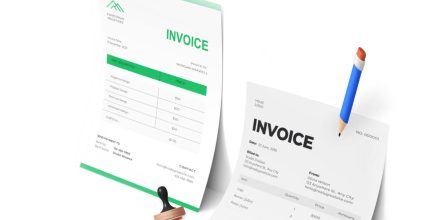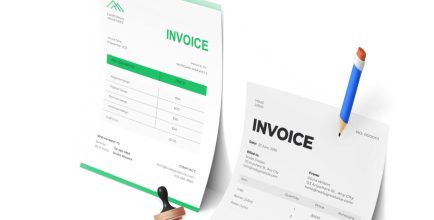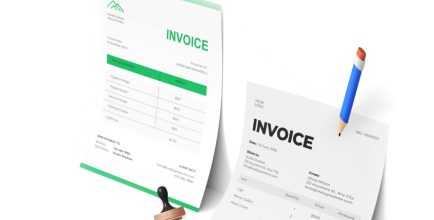Exploring Debit Memorandums
A debit memorandum, often abbreviated as a debit memo or debit note, represents a notification sent to clients to highlight a reduction in their account balances. These notifications serve as prompts for clients to address and rectify any discrepancies. Predominantly employed within the realms of banking and finance, debit memos signal adjustments rather than distinct transactions.
Such scenarios typically arise when, for instance, banks levy charges on an account, subsequently issuing a debit memo to document the fee as an adjustment, thereby deducing it directly from the account balance. This mechanism enables the correction of account balances when discrepancies occur.
Debit memos are instrumental in various contexts, including but not limited to charges for equipment rental, interest fees, penalties for insufficient funds or returned checks, and fees associated with check printing. They also play a vital role in amending errors stemming from improper deposits, ensuring that all financial records remain accurate and up-to-date.
How Debit Memos Function in Financial Management
Debit memos are a standard fixture in both personal and business banking, often appearing when fees or other charges are applied to an account. These charges may be deducted automatically, with the debit memo serving as a formal record on your bank statement that validates the transaction and explains its purpose.
For instance, if your checking account balance stands at $5,000 and a monthly service fee of $20 is assessed, your balance would adjust to $4,980. The accompanying debit memo specifies the nature and amount of the deduction.
Beyond routine service fees, debit memos might arise from specific activities such as the issuance of a bounced check or costs associated with check printing. In the realm of business accounting, particularly within the framework of double-entry bookkeeping, debit memos play a crucial role in signaling adjustments.
These adjustments, in turn, reflect increases in the amount owed. Taking a hypothetical scenario, imagine a purchase initially costing $1,000 that later experiences a price adjustment of $150 due to market changes. A debit memo would be issued to reflect this additional charge, increasing the supplier’s accounts receivable by $150 while likewise augmenting your accounts payable by the same amount, ensuring both records are accurate and current.
Key Features of a Debit Memo
Whether initiated by a seller, buyer, or a financial entity, a debit memo, also referred to as a debit note or memorandum, is a formal notice indicating an adjusted increase in the balance owed to the sender. The issuance of this document is necessitated by various circumstances, yet there are essential elements that consistently comprise its structure, ensuring clarity and accountability in financial communications. These elements encompass:
- A detailed description of the item(s) involved, including the total quantity.
- Comprehensive tax information for both the seller and the buyer.
- The unit price of the item(s), both pre- and post-tax.
- The aggregate price is detailed before and after the inclusion of taxes.
- Dates and unique reference numbers are pertinent to both the initial invoice and the debit memo being issued.
- Information on related sales, billing, or delivery documentation that supports the transaction.
- Clear articulation of payment terms and conditions.
- A concise explanation of the reason behind the issuance of the debit memo, outlining the nature of the debt and the justification for its imposition.
Varieties of Debit Memos
Debit memos manifest in various forms, each tailored to specific scenarios and industry requirements. Their application ranges from adjustments in retail banking accounts to corrections in billing errors or as mechanisms for balancing credits. Below, we delineate some prevalent types of debit memos encountered across different sectors.
Debit Memos on Banking Statements
In the realm of retail banking, a debit memo is issued when there’s a deduction from the account that isn’t a result of a direct cash withdrawal. This could be due to bank-imposed service charges, penalties for insufficient funds or bounced checks, and fees for issuing additional checks. These debts are usually denoted with a negative sign next to the applicable charge on the customer’s bank statement and are commonly included in the monthly statements sent to customers.
Debit Memos for Internal Offsets
Occasionally, a customer’s account may reflect a credit balance due to overpayment or other reasons. In such instances, companies can employ debit memos to neutralize this credit, effectively zeroing out the positive balance. This action is most suitable for minor discrepancies, where there are more practical solutions than issuing a refund. However, for significant overpayments, a direct refund is generally considered a more appropriate response.
Debit Memos in Incremental Billings
In business transactions, particularly those between businesses (B2B), a debit memo can be generated to address instances where a customer has been undercharged for goods or services provided. This type of debit memo serves as an adjustment to correct billing errors, notifying the client that their payable amount has increased accordingly. This ensures that any discrepancies in the invoiced amount, compared to the agreed transaction value, are rectified promptly, maintaining transparency and accuracy in financial records.
When to Issue a Debit Memo
A debit memo is applicable in situations where charges extend beyond standard invoiced items, often reflecting adjustments to previous transactions. Such documents are typically generated under several ordinary circumstances:
- To include taxes or adjust prices for specific line items from the original invoice that were initially overlooked or have since changed.
- To account for additional necessary charges omitted in the initial billing, such as shipping and handling costs.
- For documenting the net outcome of transactions where both debits and credits have been successfully processed, a reversal debit memo may be crafted.
- In cases where late fees are applicable, individual debit memos for each tardy transaction can be issued, systematically itemizing any penalties and late fees accordingly.
This framework ensures that all adjustments and supplementary charges are meticulously recorded, fostering transparency and accuracy in financial dealings.



